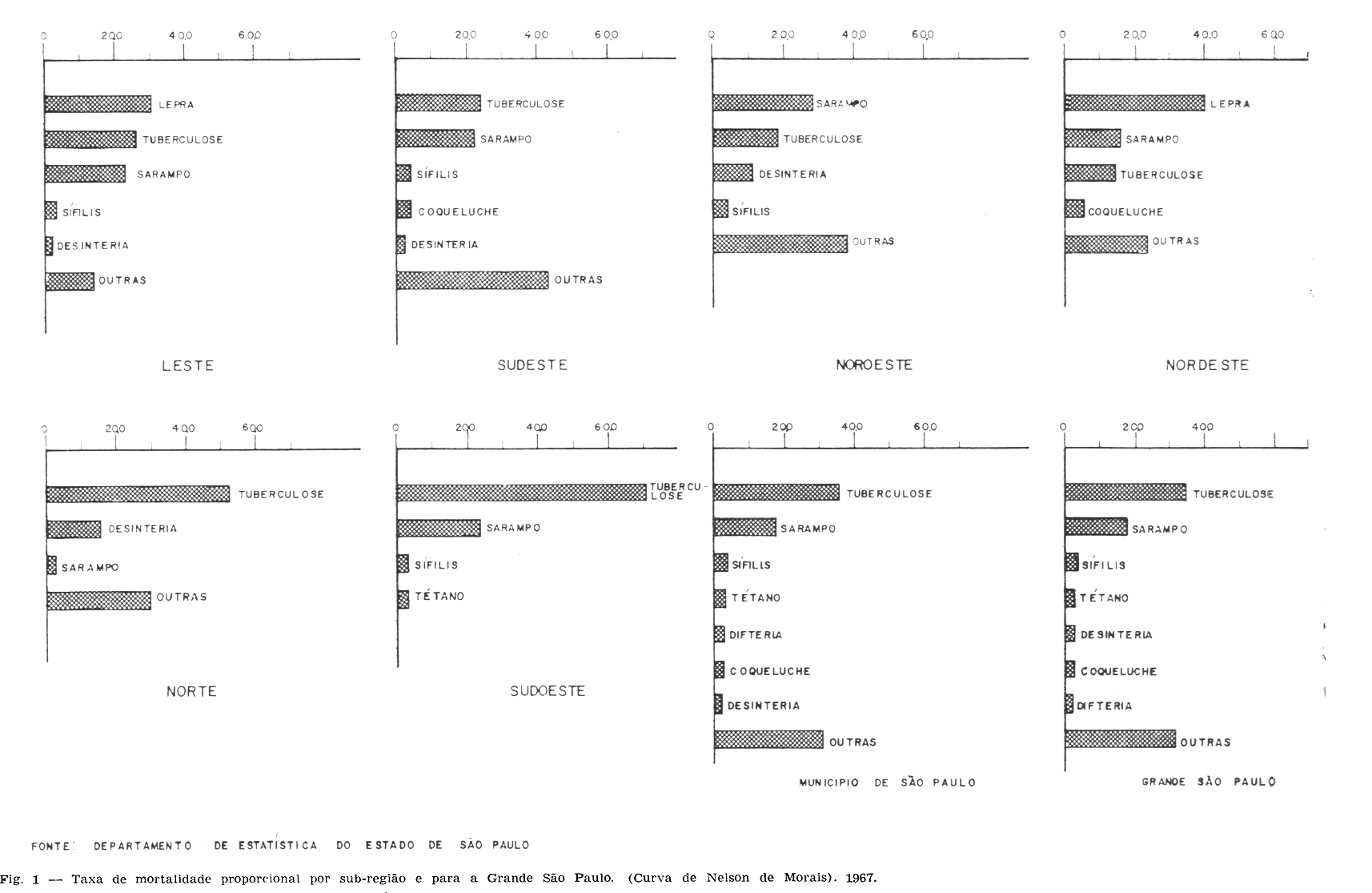Health levels were studied through a historical series in the Metropolitan Area of S. Paulo (Brazil), composed of 37 cities with a population of 8 millions inhabitants. Analysis made by region and cities seemed limited, since the vital statistical data are recorded through the local occurrence and not through the local origin. For this, superestimation of rates can happen exactly in the areas where the health resources are more available like the city of S. Paulo, which works as a polorizing center of medical care. The fall of crude death rate in the last eight years was low, changing from 8.53 to 7.67 deaths per thousand inhabitants. Nelson de Moraes' Curve (proportional deaths ratio) tended to a normal form of a "J", which demonstrated a regular health level of the studied are. According to the main causes of death, health levels showed an inadequate condition, for, although Circulatory Diseases and Neoplasm are the two main causes of death, even in developed countries, next comes Childhood Diseases, Respiratory Diseases, Digestive System Diseases and Infection and Parasitoses Diseases like in underdeceloped ares. The area of the Greater São Paulo (Brazil) itself in an intermediate position between developed and underdeveloped countries according to the causes of death that occurs in its area. Tuberculoses, Measles, Siphilis, Tetanus, Dysenteria, Whooping Cough and Diphteria were among the communicable diseases the main causes of death. The infantil mortality rate since 1961 (61.34/1000) had increased rapidly and had reached 74.92/1000 live birth in 1967. This increase was caused either by neo-natal or post-neonatal mortality. The trends happened to the city and to the State of S. Paulo, showing in this way an agravation in the health levels. Such event is unvailable with the characteristics of the area of the Greater S. Paulo (Brazil), since this is the most urbanized and social-economical developed region, not only of the State of S. Paulo, but also of Brazil, and may be of Latin America. Among the main causes of death in the infant mortality rate, appears in decreasing order, prenatal, natal and neonatal deaths, Digestive system Diseases, Respiratory Diseases and Infection Diseases. Among the main Communicable Diseases in the infant mortality period appears Measles, Whooping Cough, Tetanus, Tuberculoses, Dysenteria, Meningococcus Infections, Smallpox and Encephalites. Among the main predisponent factors, were pointed out poor maternal and infant care, lack of maternity beds to indigent people, high proportion of home deliveries, lack of qualified persons to attend infant care, inadequate enviromental health (40% of population without public water supply and 65% without public sewerage system), lack of infantil beds, mainly to the population of the lower social-economical conditions.






















